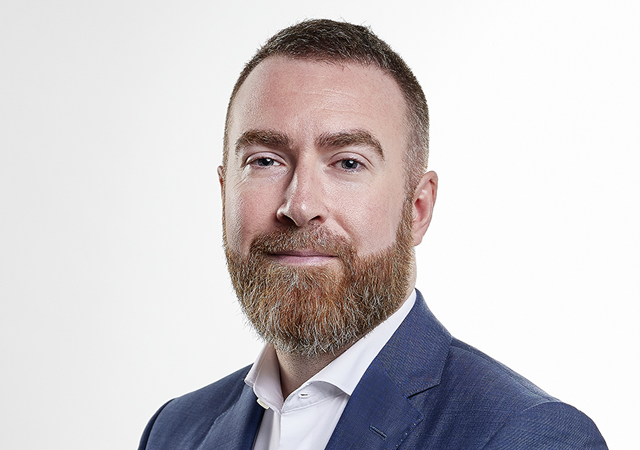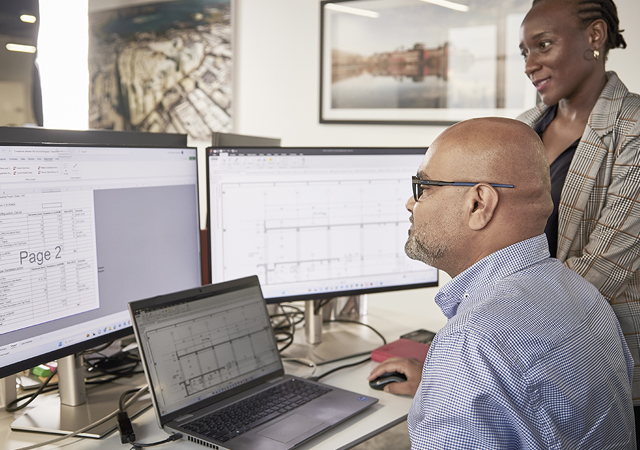Embracing advanced technologies in FM
NICK CONSTANTINE, Director – Built Asset Consultancy at Rider Levett Bucknall (RLB)*, emphasises that while it is important to incorporate advanced technology in building projects, this must be integrated with FM software and, to do this, early engagement of FM professionals is essential to gain their input.
01 August 2024
Facilities management (FM) plays a crucial role in ensuring the maintenance, repair, and ongoing supervision of a building’s physical assets, preserving the property’s value over time. In the UAE, there is a narrative promoting alignment with global industry best practices, emphasising sustainability, smart technology adoption, and asset performance analysis over the whole lifecycle.
Whilst greater levels of technology are beginning to be designed into new projects, there very often remains a clear disconnect between design and construction and asset operation.
Regionally, many multi-occupancy assets fall short in their adoption of advanced technologies for the FM service delivery. The prevalent approach often focuses on short-term expenditure, neglecting comprehensive lifecycle planning, which leads to deferred maintenance, inefficient systems and poor levels of documentation.
In building projects, FM involvement has historically commenced at the point of handing over the completed project, with very little input, if any, prior to this. Considerable value can, however, be added to a project when FM professionals are integrated into the project team at the very beginning of a project’s lifecycle. Engaging with FM professionals at an early stage ensures that the operational phase is given due consideration, and a clearly defined FM strategy can be developed, helping to bridge the current disconnect.
 |
|
Nick Constantine |
Whether new or existing, every building project should have a well-defined FM strategy. This should be symbiotic with the objectives of the owners and stakeholders and becomes the reference point from which the long-term management aims, and property lifecycle plans are delivered. The utilisation of technology during the operational phase also forms part of the strategy for things like change management, performance management, document management, lifecycle management etc.
What we typically find, on the other hand, is organisational division and the siloing of the project development teams and operational teams. The result is a heavy emphasis on construction efficiency and satisfying regulatory requirements to obtain building completion certification.
An example of this that we see is with Building Information Modelling (BIM). BIM has become normal practice now for large projects in the UAE and in Dubai it is mandated to 3D for a range of new-build developments. BIM can present huge benefits in the design and construction, but also during the operational phase. However, due to the division which is maintained between the project development teams and operational teams, the BIM handed over to the FM team is often fraught with inaccuracies and does not integrate with the Computer Aided Facilities Management (CAFM) system, resulting in an ineffective solution that fulfils little of the potential that could be obtained if set up correctly.
With an integrated BIM and CAFM system, a project is well on its way to developing a digital twin. A digital twin provides a virtual model of a physical asset which can be monitored and controlled in real-time. Having a digital twin allows for improved decision making, maintenance planning and overall efficiency. As a precise virtual representation of the asset, it is possible to run a simulation of various scenarios such as planned adaptations to the asset, security threats and events that may threaten business continuity such as fire. By doing so, the asset management and FM teams can better understand the effects these events would have on the building and identify the associated risks and plan in advance for such situations, all without affecting the day-to-day operation.
To provide such information, the digital twin relies on a number of technologies, including Internet of Things (IoT) devices and Artificial Intelligence (AI). IoT is a collection of devices which form part of a collective network that facilitate real-time communication between the devices and the cloud. This information is then visually represented and communicated to the FM teams. Information such as energy consumption and other operation parameters are collected and monitored with the FM team alerted when faults occur and effect a repair before they cause any disruption to occupants.
It may also be possible to predict such events with AI machine learning. Using machine learning algorithms to process the large volume of data being collected by the IoT devices, patterns in the data are established and anomalies can be detected. Such anomalies may not be preventing the equipment from operating but are reducing operational performance or suggesting that failure is imminent and therefore parts can be procured, and proactive repairs or replacement undertaken ahead of failure. Such data insights also provide valuable information which can help reduce energy consumption, improve space utilisation, inform lifecycle planning and streamline resource allocation.
With the implementation of such technology, it also provides the opportunity to introduce greater levels of building automation. Such features as autonomous control of building systems can adjust installations such as air-conditioning and internal lighting in response to occupancy levels or even external weather conditions. Other examples of potential automation include automated garbage collection, parts procurement and task order creation for maintenance activities. These are just a handful of the potential processes which could be made more efficient and save valuable resources that could be then utilised elsewhere.
To get the best outcomes for a project, early engagement of FM professionals is important to gain their input when selecting the technology to be incorporated into the design. By doing so, significant opportunities can be gained to enhance the building’s functionality. If developers and owners invest in a comprehensive FM strategy and leverage technology to deliver that strategy, building projects can achieve long-term cost efficiency, improved asset performance, ensure sustainability and protect the value of their buildings.
* RLB is an independent global construction and property consultancy providing management and advice throughout the built environment.
- Embracing advanced technologies in FM
- Repurposed properties: FM is key to success
- Savortex launches connected washroom solution
- Aemaco enables Servhub to gain 20pc energy savings
- H&G’s kitchen app helps cut downtime



